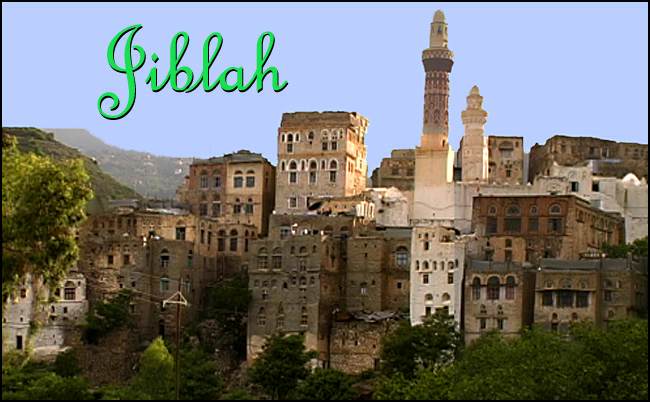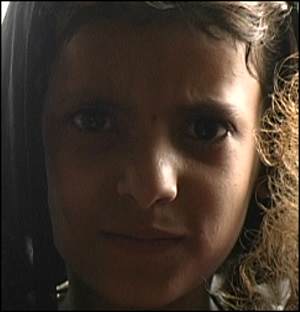©ViewZone Expedition 2001

|
A queen's pleasure
The beauty of Jiblah [above] caught the attention of Yemen's second strongest female ruler; after Sheba, the venerable Queen Sayed Arwa bin Ahmad, who made this city her home during her peaceful fifty year reign. Nestled into the hillside, Jiblah is wreathed in eucalyptus, acacias, cacti and carob trees. This city was once the seat of power for the entire Israelite Sulayid nation, from the 11th into the 12th century.
Gary and I met Rayona and Abdul Joseph Khassim, a sister and brother pair, who gave us a well informed tour of the labyrinth of avenues leading to the ancient Great Mosque of Jiblah.
strange stew of English, French and Arabic.
Many of the engaging children we met, who frequently interacted with the tourists, could converse in a multitude of languages. Rayona and I communicated in a strange stew of English, French and Arabic, though she could also speak German, Spanish and Italian . The fact that she was only ten years old made this even more impressive. While we watched Gary filming the children, she asked me if I had any siblings at home.
"La," I answered, "No, only me,"
"You have no sisters?" Rayona asked me. "I am your sister!"
The idea of a Yemeni sister was a sweet one. Coming from traditionally large families, my only-child status must've seemed a sad thing to them. No sisters or brothers? No, this will not do, here, come into my family! This was a sentiment that I experienced many times in Yemen.
Everyday life
I was taught to use the bright magenta flowers [right] growing along the walls as make-up. Crushed between my fingers and applied as lipstick and rouge the flower gave my skin a lovely natural tint!
Donkeys [right] are still in wide use through the narrow streets of this picturesque town. Bundles of donkey food are prepared by hand. I took the opportunity to learn this skill from a woman who called me to join her from the doorway of her home.
:
The Great Mosque of Jiblah
Inside the Great Mosque of Jiblah, we could see an airy courtyard [above] used for prayer and meditation . Built in 1088 B.C., on top of already existing ruins, the mosque was the gift of Queen Arwa. It's trademark red and white minaret [ see top] delicately reaches for the sky.
A notable feature of the architecture are the four gates leading into the mosque from four different corners of the city. We entered the mosque from the great square by climbing the stairs to the main courtyard. The area was empty as it was not yet time for mid-day prayers. A few men sat, reading and meditating on the Koran.
Queen Arwa has been dead for over 800 years but the people of Jiblah have not forgotten her. Her remains have been given a permanent home in the mosque that she built. The massive silver and gold Tomb of Arwa rests there -- the only woman to be entombed within the hallowed walls of a mosque.
|

|
|
|
Previous Page || ViewZone || --next-->
